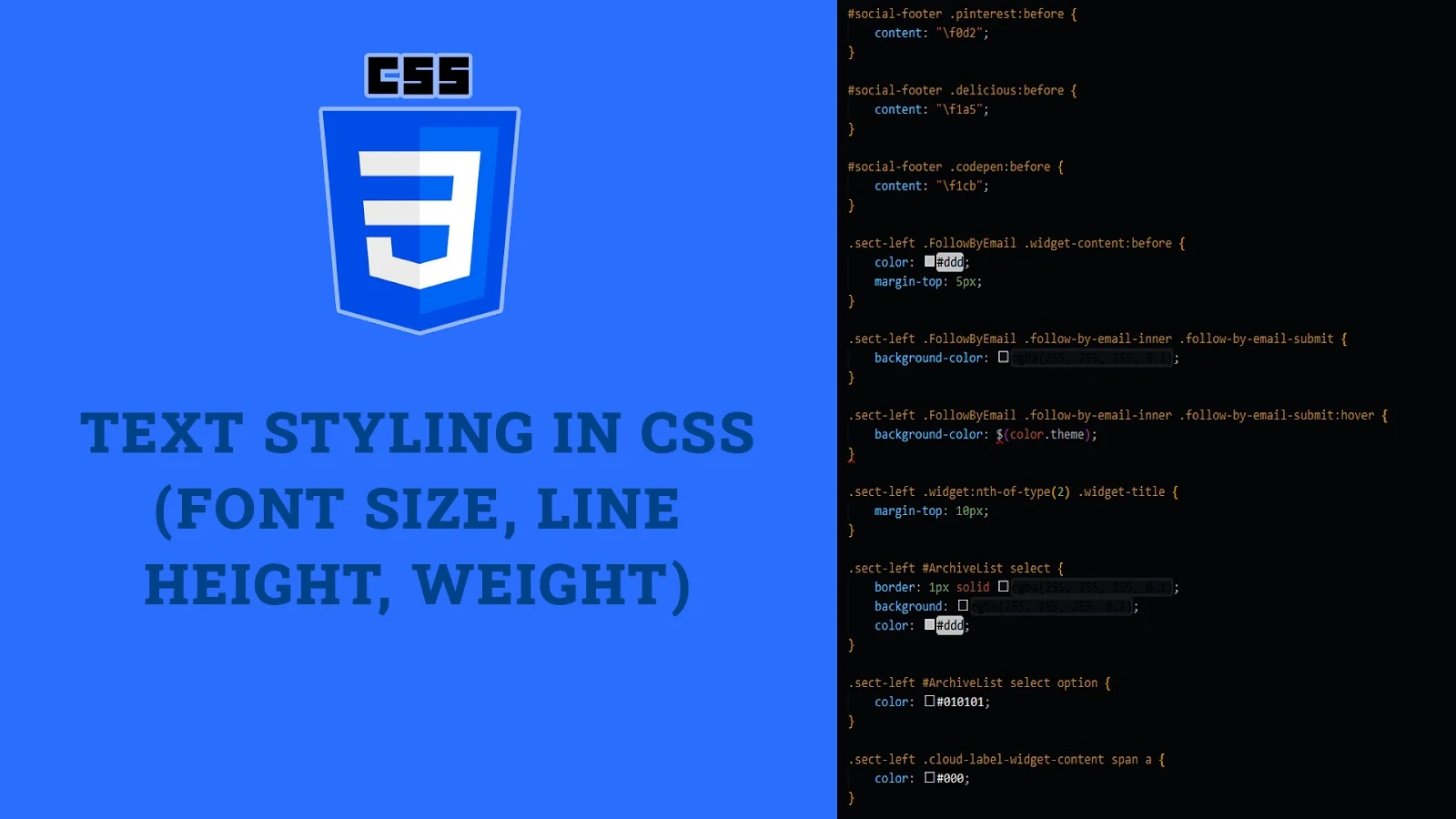Text styling is a crucial aspect of web design, as it enhances the readability and visual appeal of your content. CSS provides several properties to control text styling, including font size, line height, and font weight. In this article, we will explore these properties in detail, along with examples to demonstrate how to use them effectively.
Font Size
The font-size property specifies the size of the text. It can be set using various units, such as pixels (px), ems (em), rems (rem), percentages (%), and viewport units (vw, vh). Choosing the right unit depends on your design requirements and the level of responsiveness you need.
Example:
.text-small {
font-size: 12px;
}
.text-medium {
font-size: 1em;
}
.text-large {
font-size: 2rem;
}
.text-responsive {
font-size: 3vw;
}Supporting HTML:
<!DOCTYPE html>
<html>
<head>
<link rel="stylesheet" href="styles.css">
</head>
<body>
<p class="text-small">This is small text.</p>
<p class="text-medium">This is medium text.</p>
<p class="text-large">This is large text.</p>
<p class="text-responsive">This is responsive text.</p>
</body>
</html>Line Height
The line-height property sets the amount of space between lines of text. It can be specified using various units, such as pixels (px), ems (em), rems (rem), percentages (%), and unitless values. A unitless value is recommended for better scalability across different font sizes.
Example:
.line-height-small {
line-height: 1.2; /* Unitless value */
}
.line-height-medium {
line-height: 1.5; /* Unitless value */
}
.line-height-large {
line-height: 2; /* Unitless value */
}
.line-height-fixed {
line-height: 24px; /* Fixed value */
}Supporting HTML:
<!DOCTYPE html>
<html>
<head>
<link rel="stylesheet" href="styles.css">
</head>
<body>
<p class="line-height-small">This text has a small line height.</p>
<p class="line-height-medium">This text has a medium line height.</p>
<p class="line-height-large">This text has a large line height.</p>
<p class="line-height-fixed">This text has a fixed line height.</p>
</body>
</html>Font Weight
The font-weight property specifies the thickness or boldness of the text. It can be set using keywords (such as normal, bold) or numeric values ranging from 100 to 900. A higher value represents a bolder font weight.
Example:
.weight-normal {
font-weight: normal; /* Equivalent to 400 */
}
.weight-bold {
font-weight: bold; /* Equivalent to 700 */
}
.weight-100 {
font-weight: 100;
}
.weight-900 {
font-weight: 900;
}Supporting HTML:
<!DOCTYPE html>
<html>
<head>
<link rel="stylesheet" href="styles.css">
</head>
<body>
<p class="weight-normal">This text has normal font weight.</p>
<p class="weight-bold">This text has bold font weight.</p>
<p class="weight-100">This text has font weight 100.</p>
<p class="weight-900">This text has font weight 900.</p>
</body>
</html>Combining Text Styling Properties
By combining the font-size, line-height, and font-weight properties, you can create visually appealing and readable text styles that enhance your web design.
Example:
.text-styled {
font-size: 1.5rem;
line-height: 1.6;
font-weight: bold;
color: #2c3e50;
}Supporting HTML:
<!DOCTYPE html>
<html>
<head>
<link rel="stylesheet" href="styles.css">
</head>
<body>
<p class="text-styled">This text is styled with combined font size, line height, and font weight properties.</p>
</body>
</html>Fun Facts and Little-Known Insights
- Fun Fact: Using relative units like ems and rems for font size and line height can create a more scalable and maintainable design, especially in responsive layouts.
- Insight: Line height can significantly impact readability. A line height of 1.5 to 1.6 times the font size is generally considered optimal for body text.
- Secret: Combining different font weights within the same design can create a visual hierarchy, making it easier for users to scan and understand the content.
Conclusion
In this article, we explored various CSS properties for text styling, including font size, line height, and font weight. These properties allow you to control the size, spacing, and boldness of text, enhancing the readability and visual appeal of your web content. By understanding and effectively using these properties, you can create attractive and user-friendly designs that improve the overall user experience. Combining these properties with other CSS techniques can help you achieve a polished and professional look for your web pages.
 Reviewed by Curious Explorer
on
Sunday, December 08, 2024
Rating:
Reviewed by Curious Explorer
on
Sunday, December 08, 2024
Rating:




No comments: